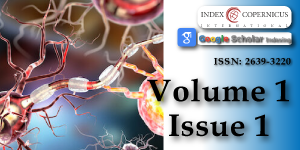Experimental ‘hindbrain related’ syringomyelia: some mechanisms of spinal cord damage
Main Article Content
Abstract
Syringomyelia in combination with inherent or acquired hindbrain abnormalities is the non seldom and at the same time controversial issue.
Purpose: The etiology and pathogenesis creates a lot of discussion.
Methods: Experimental syringomyelia was induced in 20 anesthetized rabbits by injecting 0.5 ml of 25% kaolin suspension into the cisterna magna. Six rabbits with puncture and injection sterile saline NaCl were used as a control. The animals were sacrificed 1, 2, 4 and 6 months after the kaolin injection. Four hydrocephalus rabbits were sacrificed in 17 hours after the puncture of lateral ventricle with injection of solution of colloidal gold labeled human albuminum. The sections of the brain and spinal cord were stained with hematoxylin and eosin by Nissle and Marchi methods and with immunogold technique. Retropharyngeal lymph nodes of the animals were examined by electron microscopy.
Conclusion: Our observation showed that water hammer effect and internal destruction of the spinal cord may lead to continuous antigen stimulation of regional lymph nodes and play an important role in pathogenesis of experimental syringomyelia.
Article Details
Copyright (c) 2017 Larionov SN, et al.

This work is licensed under a Creative Commons Attribution 4.0 International License.
Levine DN. The pathogenesis of syringomyelia associated with lesions at the foramen magnum: a critical review of existing theories and a proposal of a new hypothesis. J Neurol Sci. 2004; 220: 3-21. Ref.: https://goo.gl/o6ZSse
Williams B. Simultaneous cerebral and spinal fluid pressure recordings. Cerebrospinal dissociation with lesions at the foramen magnum. Acta Neurochir. 1981; 59: 123-142. Ref.: https://goo.gl/9W2xbr
Ball MJ, Dayan AD. Pathogenesis of syringomyelia. Lancet. 1972; 2: 799-801. Ref.: https://goo.gl/x98d8F
Cserr HF, Harling-Berg CJ, Knopf PM. Drainage of brain extracellular fluid into blood and deep cervical lymph and its immunological significance. Brain Pathol. 1992; 2: 269-276. Ref.: https://goo.gl/fvbiVB
Bakker EN, Bacskai BJ, Arbel-Ornath M, Aldea R, Bedussi B, et.al. Lymphatic clearance of the brain: perivascular, paravascular and significance for neurodegenerative diseases. Cellular and Molecular Neurobiology. 2016; 36: 181-194. Ref.: https://goo.gl/mTGQXT
Kida S, Pantazis A, Weller RO. CSF drains directly from the subaracnoid space into nasal lymphatics in rat. Anatomy, histology and immunological significance. Neuropath Appl Neurobiol. 1993; 19: 480-488. Ref.: https://goo.gl/XTtQFd
Weller RO, Djunda E, Yow HY, Carare RO. Lymphatic drainage of the brai and pathophysiology of neurological disease. Acta Neuropathol. 2009; 117: 1-14. Ref.: https://goo.gl/oZ7XRp





